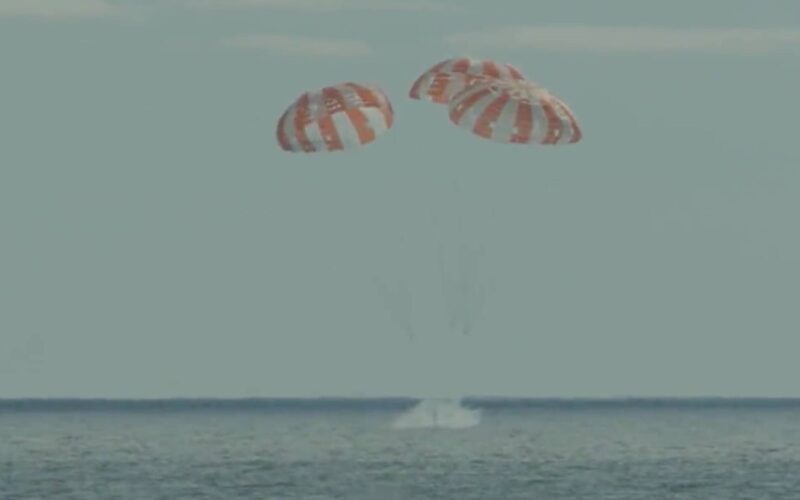Orion capsule, which splashed down in the Pacific Ocean after spending 25 days on its journey around the Moon, has been successfully recovered by NASA.
The splashdown occurred at 9:40 AM PST (17:40 GMT) on December 11, 2022. NASA’s recovery ship, USS Portland, took the capsule onboard.
“The splashdown of the Orion spacecraft – which occurred 50 years to the day of the Apollo 17 Moon landing – is the crowning achievement of Artemis I. From the launch of the world’s most powerful rocket to the exceptional journey around the Moon and back to Earth, this flight test is a major step forward in the Artemis Generation of lunar exploration,” NASA Administrator Bill Nelson is quoted in the agency’s press release.
Unique landing procedure
Prior to splashdown, the Orion performed a skip-reentry, a unique maneuver designed to increase the landing accuracy and reduce G-forces. It “skipped” off the atmosphere during the reentry, temporarily descending, then ascending, then descending again.
According to Lockheed Martin, the manufacturer of the Orion, this was the first time skip-reentry was performed by a human-rated spacecraft.
Prior to starting the reentry, the European Service Module was detached from the Orion. Its heat shield then experienced temperatures of up to 5,000 degrees Fahrenheit (2,760 degrees Celsius) during the 20-minute-long descent.
According to NASA, the spacecraft will be transported onboard the USS Portland and then by a truck back to Kennedy Space Center. Its hatch will then be opened to extract the payloads that include numerous experiments performed during the Orion flight.
Towards new Moon landings
The Artemis I mission, which marked the maiden flights of both the Orion spacecraft and the SLS rocket, was the first step of NASA’s ambitious new Moon landing program, intended to return humans to the Earth’s satellite for the first time since Apollo missions of the 1960s and 70s.
The SLS took off from Kennedy Space Center in Florida, US, on November 16, 2022, after several months of delays.
Despite numerous technical problems that delayed the lift-off, all aspects of the mission ended up a success, and the Orion began coasting on a trajectory toward the Moon a few hours later.
It then entered the orbit around the Moon on November 27, after performing a close fly-by, and spent eight days there before heading back to Earth.
According to NASA, the Artemis I mission was specifically designed to stress-test the spacecraft before launching the Artemis II, which is planned to carry a four-person crew on a similar round-the-Moon journey in mid-2024.

